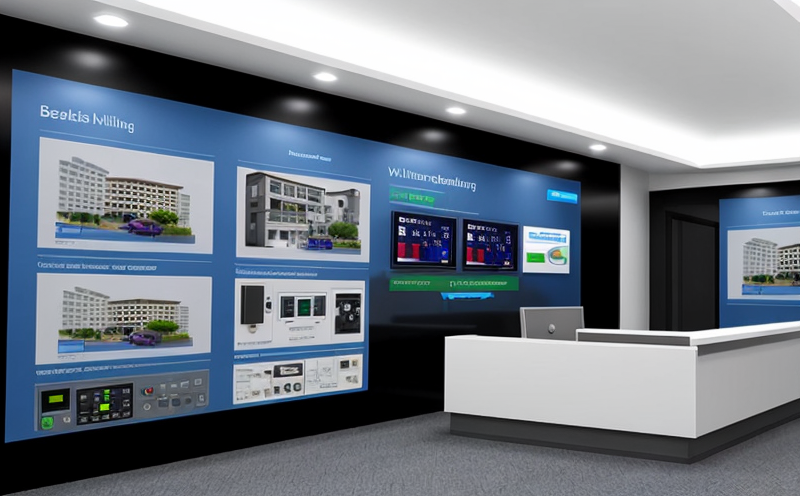EN 50600-2-2 Data Center Environmental Testing
The EN 50600 series of European standards provides a framework for the design, installation, and operation of data centers. Specifically, EN 50600-2-2 focuses on environmental testing to ensure that data center systems meet stringent conditions to safeguard equipment integrity, performance, and reliability. This test is critical in ensuring that data centers are prepared for real-world environments where they will operate.
Data centers are the backbone of modern infrastructure, supporting everything from cloud computing services to financial transactions. They must be designed with robust environmental controls to maintain optimal operating conditions. The EN 50600-2-2 test provides a standardized approach to simulating and testing these environments before deployment. By adhering to this standard, data center operators can ensure their facilities are ready for the worst-case scenarios they may encounter.
The test is particularly important in regions with extreme climates or varying environmental conditions. For instance, it helps verify that equipment can withstand high humidity levels, dust accumulation, and temperature fluctuations without compromising performance. This testing ensures compliance with international standards and facilitates easier integration into global data center networks.
In summary, the EN 50600-2-2 test is an essential step in ensuring that data centers meet both local and international safety and quality requirements. It provides a structured approach to environmental stress testing, which helps prevent costly failures down the line by identifying potential issues early in the design phase.
The process involves subjecting equipment to various environmental stresses such as humidity, temperature, dust, and vibrations. The test ensures that all critical components of data center infrastructure—racks, cooling systems, power supplies, and networking gear—are capable of functioning reliably under these conditions.
Scope and Methodology
| Test Parameter | Description | Acceptance Criteria |
|---|---|---|
| Temperature Range | -20°C to +55°C (optional: -40°C to +70°C) | Equipment must operate within specified limits without failure. |
| Humidity Range | 10% RH to 93% RH (optional: 4% RH to 98% RH) | No condensation allowed on equipment surfaces during testing. |
| Vibration Levels | 0.5 g to 2.5 g, 1-200 Hz | No damage or degradation in performance after exposure. |
| Dust Accumulation | 0.3 μm to 18 μm particles at a concentration of up to 60 mg/m3 | Equipment must maintain specified operating parameters under dust conditions. |
The test methodology involves subjecting the equipment to controlled environmental conditions that simulate real-world scenarios. This includes temperature cycling, humidity exposure, vibration testing, and dust accumulation tests. Each parameter is designed to stress the equipment in a manner that reflects potential operational challenges it might face.
Temperature cycling typically starts at room temperature and gradually increases or decreases by 10°C increments until reaching the specified limits. Humidity levels are adjusted using controlled chambers, ensuring precise conditions for testing. Vibration tests simulate transportation and operating conditions where equipment is subjected to mechanical stress. Dust accumulation tests involve exposing equipment to airborne particles within specific concentration ranges.
After each test phase, critical parameters such as power consumption, component performance metrics, and overall functionality are monitored closely. Any deviations from expected values indicate potential issues that need addressing before deployment.
Why Choose This Test?
- Ensures Compliance: Adhering to EN 50600-2-2 ensures compliance with international standards, making it easier for data centers to integrate into global networks.
- Predictive Performance: By simulating real-world environmental conditions, this test provides insights into how equipment will perform under various stressors.
- Risk Mitigation: Identifying potential issues early in the design phase helps mitigate risks associated with equipment failure or downtime.
- Enhanced Reliability: Rigorous testing improves overall reliability and extends the lifespan of data center infrastructure by ensuring it can withstand harsh environmental conditions.
- Cost Efficiency: Early identification of problems through this testing process reduces long-term operational costs by preventing expensive repairs or replacements down the line.
The EN 50600-2-2 test is a critical component in ensuring that data center infrastructure meets stringent environmental requirements. By choosing this test, organizations can demonstrate their commitment to quality and reliability while also gaining valuable insights into how equipment will perform in real-world conditions.
Quality and Reliability Assurance
- Standardized Testing: Adherence to EN 50600-2-2 ensures that testing is consistent across different facilities, promoting uniform quality standards.
- Data Center Integration: Compliance with this standard facilitates easier integration into global data center networks by ensuring compatibility and interoperability.
- Customer Confidence: Demonstrating compliance through rigorous testing builds trust among customers who rely on the reliability of data center services.
- Risk Management: By identifying potential issues early, this test helps manage risks associated with equipment failure or operational disruptions.
Data centers are mission-critical facilities that support a wide range of services. Ensuring that these facilities meet stringent environmental requirements is crucial for maintaining high standards of service and reliability. The EN 50600-2-2 test plays an essential role in this process by providing a structured approach to environmental stress testing.





